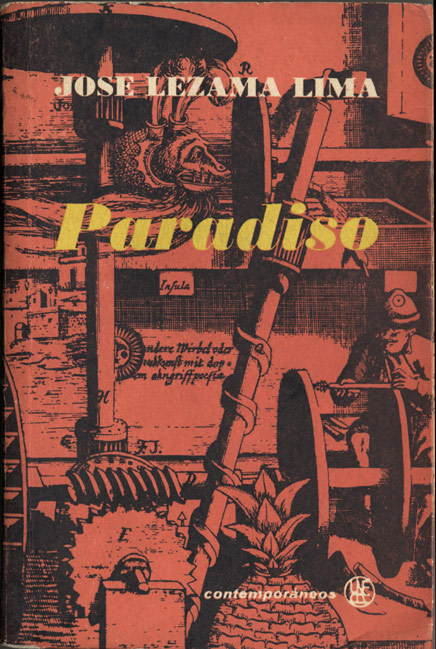4.1.2.2.9 The novel “Paradiso”, published in its entirety by José Lezama Lima (1910-1976) in 1966

“Paradiso” is a novel that has brought substantial benefits to Cuban literature and, more generally, to the Spanish language. Although it was published in 1966, many of its chapters had appeared in subsequent editions of Orígenes, receiving widespread acclaim within the closed circle of Origenist Parnassus and receiving some critical suspicion in the face of a work that appeared unpredictable in its twists and turns, and with a web of images that did not readily reveal its meaning.
The work has been interpreted under the light of various systems, including the Kabbalistic one that makes its chapters correspond with their numerological meaning, undoubtedly not pure invention but not enough to amass the irreducible nature of this narrative proposal and at the same time of an unusual poetic density in our literature – with the exception of Dulce María Loynaz’s Garden in terms of poetics in novels – open to multiple readings but until now elusive of its ultimate arcane.
It has even been described as a Gothic novel, something Lezama himself did not agree with, not because it was alien to his purpose, but because of the impossibility of such a deepening or state of grace, characteristic of a religious fervor that is unattainable, yet inspiring, according to the Catholic faith Lezama professed throughout his life. Regarding the novel, its author offers some exegetical elements in an interview with Jean Michel Fossey:
“As soon as one delves into the pages of Paradiso, we realize we are at the very root, at the very root of poiesis, as the Greeks said, of the creation of the breathing world, eager to transform the inorganic into the organic, the most distant into the closest, and all teeming with a world that stirs and aspires to live; in this reproduction of the everyday circumstantial and the most distant, my novel emerged, which I developed over the years, mixed with my usual work of essays and poetry…”
Paradiso is then the pinnacle of literary procedures of diverse nature and traditionally pigeonholed in genres such as poetry and also the essay, an expression of a creative freedom perhaps unprecedented in terms of a course of images that is not cut off by the censorship of conscience.
Some of these elements could be associated with surrealism, but Lezama’s writing and its essential lyricism do not emanate from the unconscious but from a contemplation, one might say, fervent, of reality and the need to create another, captured in “Paradiso”, whose continuation in “Inferno” was not finalized due to his death before finishing the text, which remained with the title of “Oppiano Licario”, a character who already appeared in the final pages of “Paradiso”.
Finally, a minimal reference to the linguistic richness of the work is necessary – although lexical deciphering does not in any way mean the total revelation of the meaning of the tropological – with which, more than baroque hermeticism, it rescues in its voice and for the reading public terms that long disuse had silenced, or proper to non-literary fields: scientific, philosophical, mythological, etc., such as hylozoism, faerie, excogitate, hypertelia, symplegades, anadyomena, recipiendary and many others.
All these elements have made this unique novel one of the most important in the Spanish language in the 20th century.








